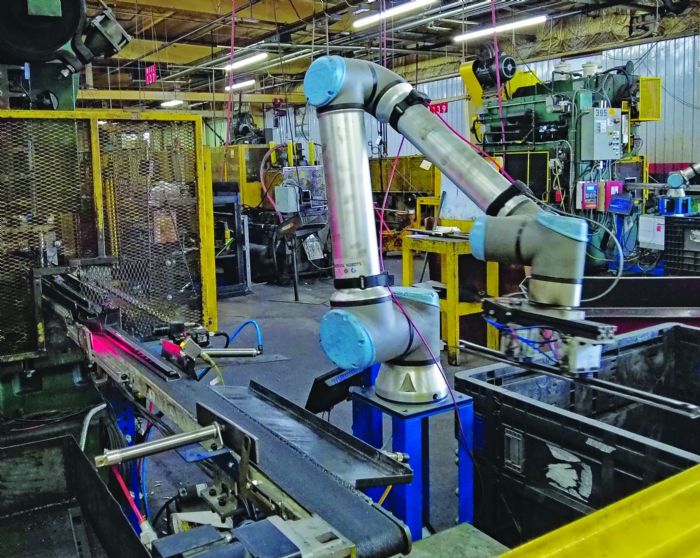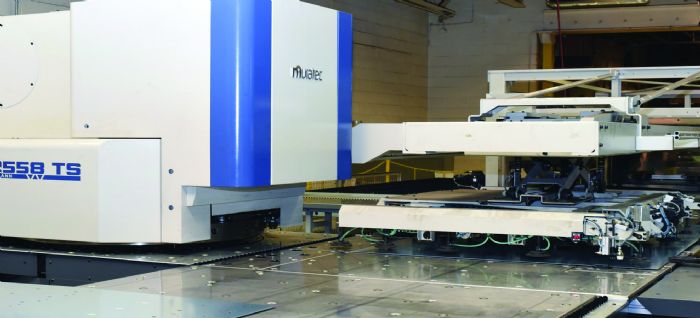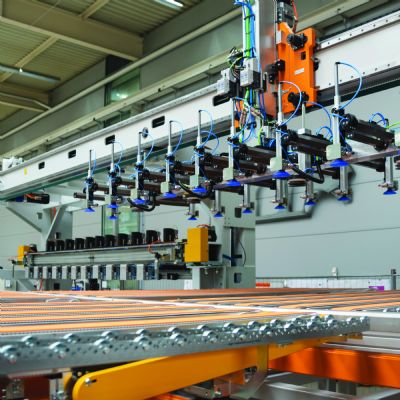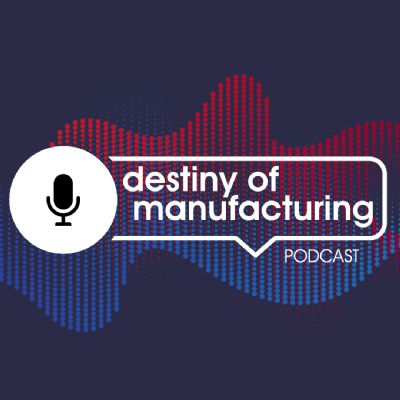 “All of these investments facilitated double-digit growth,” Clement says, offering that all of the company’s core fabricating machinery now includes automatic material feed. “Since 2020, we have doubled our sales and have been able to retain our core group of employees and cross-train them on all of these machines, courtesy of a formal inhouse training program. And, our investments in automation have a huge impact on safety. Our employees experience less fatigue and physical strain due to the automated material-handling equipment.”
“All of these investments facilitated double-digit growth,” Clement says, offering that all of the company’s core fabricating machinery now includes automatic material feed. “Since 2020, we have doubled our sales and have been able to retain our core group of employees and cross-train them on all of these machines, courtesy of a formal inhouse training program. And, our investments in automation have a huge impact on safety. Our employees experience less fatigue and physical strain due to the automated material-handling equipment.”
The capex push included a major investment in Murata Machinery USA and its Muratec-brand turret punch presses and related automation for punching, forming and extruding.
“We once had three standalone turret presses with no automation,” Clement says. “We needed one person per shift hoisting a sheet off of a skid and onto the worktable and then cutting parts off of the sheet all day. The monotony and fatigue was unhealthy. Now, instead of one person per machine per shift, the three machines together only require 1.5 operators per shift. Setup and loading/unloading are entirely automatic.”
Besides freeing employees for other more rewarding and valuable tasks and reducing risks of injury, the new turret presses and their automation enable
11-sec. cycle times for sheet load/unload, a significant improvement that boosts utilization and throughput, according to Clement.
Find out more, including Clement’s all-in automation philosophy, as he joins the MetalForming LIVE on the Shop Floor panel on April 29.
Automated Inspection and Packaging at Pennant
According to the U.S. Bureau of Labor Statistics, following the beginning of the Covid-19 pandemic U.S. manufacturing labor output fell at an annual rate of 43%. During Q2 2020, hours worked fell by 38%. Q3 2020 was a different animal altogether, however, as manufacturing output surged by 53% but with only a 30% increase in hours worked. That huge increase in productivity (18%) resulted, in part, from big investments made by manufacturers in automation, including robots and cobots, as well as automated visual quality-inspection technology. Exacerbating an already troubling workforce shortage, millions of workers left the manufacturing scene at the beginning of the decade.
Looking back at industry surveys conducted at the time, manufacturers announced plans to invest an average of 25% of their capital in automation over a 5-yr. timespan. Such is the case at metal former Pennant, whose plant in Sabina, OH, recently was visited by MetalForming. To meet growing labor challenges, Pennant, as early as mid-2019, had installed its first collaborative robot (cobot), to work on the exit end of one of its roll forming production lines. The goal of that initial automation investment: to evaluate the use of cobots for packaging operations so that it could relocate workers to its pressroom.
The Pennant-Sabina facility operates 16 stamping presses—six progressive-die presses and 10 hand-transfer machines—and more than 20 roll forming mills, as detailed in an article in the January/February 2025 issue of MetalForming.
“To free up an operator from the roll form mills and move him to the pressroom,” recalls production manager Charlie Harpen, “we decided in mid-2019 to investigate the use of cobots to handle end-of-line packaging of the roll formed parts. And, at the same time we wanted to evaluate the use of automated visual inspection to verify part-length accuracy as parts left the last cutoff station on the roll form lines.”
Fast forward to today and the facility now employs 11 cobots on its production lines—nine for end-of-line packaging on its roll forming lines, and two cobots used to move parts and assemblies in and out of resistance-spot-welding cells. As much as possible, the packaging automation has been standardized to optimize flexibility should the cobots need to be moved from line to line. While parts vary in length, size and weight, the cobots are easily and quickly reprogrammed as needed, explains Harpen.
Joining MetalForming’s editors on this edition of MetalForming Live on the Shop Floor is Pennant president Chris Highfield, who, along with Nick Laney, director of operations, will explore the history of its cobot-integration projects, and the impact they’ve had on the facility’s efficiency, quality and safety.
“Automating not just the end-of-line packaging operation but also part-quality inspection has allowed us to make more efficient use of labor, improve quality and reduce fatigue,” Highfield says. “We get more consistent and accurate results and eliminate the possibility of shipping bad parts.”
Length tolerance on parts (dishwasher rails, for example) varies from ±0.010 to 0.050 in., depending on the part. Should the inspection system (based on Keyence XG-series cameras) find an out-of-spec part, it triggers a blowoff gun to push the suspect part off of the conveyor before the cobot can grab it. Otherwise, good parts convey to the cobot, which employs magnetic end-of-arm tooling to move the parts from conveyor to finished-goods tote.
Cobots are Universal Robots six-axis UR10 units—10-kg load capacity, 1300-mm reach—mounted on pedestals. Depending on part size and shape, totes can hold as many as 6000 parts; some of the roll-forming mills run at speeds to 1000 parts/hr. Cobot programming includes allowance for part buildup in the totes—parts drop closer to the totes at first, to prevent damage, then the cobot indexes upward over time as parts build up in the totes. Based on part count, lines shut down automatically and momentarily for manual tote changes every few hours.
The investment made? Highfield will share with our online MetalForming Live audience those figures, and explain the return-on-investment calculations, which include more consistent quality results as well as improved operator health and well-being, as they’re no longer required to spend hours upon hours performing repetitive-motion end-of-line part handling and packaging. MF
Industry-Related Terms: Bending,
Case,
Core,
Form,
Forming,
LASER,
Lines,
Roll Forming,
Run,
Tolerance,
Turret,
Forming,
Forming,
Laser Cutting,
Punching,
StampingView Glossary of Metalforming Terms
See also: Precision Metalforming Association
Technologies: Bending, CNC Punching, Cutting
 Argon Industries, through Greg Clement, its owner and founder, was established in 2002 with four employees and three fabricating machines. Located in Milwaukee, WI, the company has since invested substantially in production and automation technology to counter the dearth of skilled labor and succeed as a one-stop job shop.
Argon Industries, through Greg Clement, its owner and founder, was established in 2002 with four employees and three fabricating machines. Located in Milwaukee, WI, the company has since invested substantially in production and automation technology to counter the dearth of skilled labor and succeed as a one-stop job shop.







 “All of these investments facilitated double-digit growth,” Clement says, offering that all of the company’s core fabricating machinery now includes automatic material feed. “Since 2020, we have doubled our sales and have been able to retain our core group of employees and cross-train them on all of these machines, courtesy of a formal inhouse training program. And, our investments in automation have a huge impact on safety. Our employees experience less fatigue and physical strain due to the automated material-handling equipment.”
“All of these investments facilitated double-digit growth,” Clement says, offering that all of the company’s core fabricating machinery now includes automatic material feed. “Since 2020, we have doubled our sales and have been able to retain our core group of employees and cross-train them on all of these machines, courtesy of a formal inhouse training program. And, our investments in automation have a huge impact on safety. Our employees experience less fatigue and physical strain due to the automated material-handling equipment.”


 Podcast
Podcast